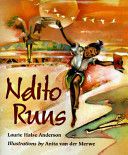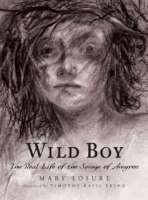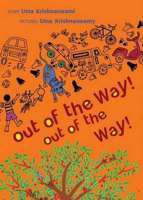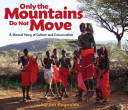In this breathtaking companion to the award-winning Grandfather Gandhi, Arun Gandhi, with Bethany Hegedus, tells a poignant, personal story of the damage of wastefulness, gorgeuously illustrated by Evan Turk. At Grandfather Gandhi’s service village, each day is filled, from sunrise to sunset, with work that is done for the good of all. The villagers vow to live simply and non-violently. Arun Gandhi tries very hard to follow these vows, but he struggles with one of the most important rules: not to waste. How can throwing away a worn-down pencil hurt anyone? How can wastefulness lead to violence? With the help of his grandfather, Arun learns how every wasteful act, no matter how small, affects others. And in time he comes to understand the truth of his grandfather’s words: “Be the change you wish to see in the world.”
village
Ndito Runs

Every day many children in Kenya run miles to school–so does Ndito. From her village in the highlands she runs barefoot, across ridges and down hills, under baobab trees and through tall grass
Wild Boy: The Real Life of the Savage of Aveyron

One day in 1798, woodsmen in southern France returned from the forest having captured a naked boy. He had been running wild, digging for food, and was covered with scars. In the village square, people gathered around, gaping and jabbering in words the boy didn’t understand. And so began the curious public life of the boy known as the Savage of Aveyron, whose journey took him all the way to Paris. Though the wild boy’s world was forever changed, some things stayed the same: sometimes, when the mountain winds blew, “he looked up at the sky, made sounds deep in his throat, and gave great bursts of laughter.” In a moving work of narrative nonfiction, Mary Losure invests a compelling story from history with vivid and arresting new life.
The Story of Silk: From Worm Spit to Woven Scarves

Join author and photographer Richard Sobol as he picks up his camera once more and travels to a small village in Thailand for an in-depth exploration of the story of silk and the labor-intensive process of making it. From nurturing the silkworms to weaving the fabric and photographing the children as they proudly model the finished product, this first-person narrative, illustrated with richly detailed photographs, chronicles the amazing process of creating one of history’s most desired textiles.
Out of the Way! Out of the Way!

A young boy spots a baby tree growing in the middle of a dusty path in his village. He carefully places rocks around it as the local mango seller rushes past shouting, ?Out of the way! Out of the way!” As the tree grows bigger, people and animals traverse the path until it becomes a lane, flowing like a river around the tree and getting out of its way. Over time, the lane becomes a road, and a young man crossing the road with his children remembers the baby tree from long ago. By the time he is an old man, the tree has become a giant. The city traffic continues to rattle past, noisier and busier than ever, but sometimes the great tree works its magic, and people just stop, and listen. In this simple, lyrical story, a wide-spreading tree and a busy road grow simultaneously, even as time passes and the footsteps of people and animals give way to speeding cars, buses and trucks.
See the review at WOW Review, Volume 5, Issue 1
The Churki-Burki Book Of Rhyme
Meet Churko and burki, the rhyming sister, and spend a day with them in their billage, playing and singing songs. Adapted from the Gond arist Durga Bai’s rendering of her own childhood in her village Paranghr, this is a merry tale of fun and rhyme.
The Umbrella Queen
When Noot is finally allowed to paint umbrellas like the other women and girls in her village, she secretly hopes that she might be chosen as this year’s Umbrella Queen. Carefully, she creates serene flowers and butterflies- exactly as she has seen her mother and grandmother do for years.
But soon her imagination takes over, and Noot finds herself straying from the old patterns to the dismay of her family, who depend on the traditionally painted umbrellas for their livelihood.
Her parents tell her she must go back to the old designs and Noot obeys, knowing that the King is coming soon to name the one who has painted the most beautiful umbrella. After all, the King would never choose a queen who breaks from tradition…would he?
Only The Mountains Do Not Move

Nobody can say he is settled anywhere forever;
it is only the mountains which do not move from their places.
So goes a Maasai proverb, and so goes the lives of the Maasai in Africa. For hundreds of years they have moved with their herds of cattle and goats across thousands of miles in Kenya and Tanzania.
Today the Maasai face new challenges. Their traditional way of life is threatened, lands are overgrazed, and wildlife is in danger. Maasai tribes are meeting these obstacles head-on adapting their lives and agricultural practices while keeping their vibrant, close-knit culture alive.
Award-winning author-photographer Jan Reynolds presents a striking glimpse of these dynamic people. Only the Mountains Do Not Move shows one Maasai tribe’s remarkable ability to forge a delicate balance between the richness of the past and the needs of the future.
Chirchir Is Singing
Chirchir just wants to make herself useful like all her other family members. But she drops Mama’s water bucket, spills Kogo’s tea, and sends Baba’s potatoes tumbling down the hill. but each of their tasks proves too challenging for her.Isn’t there something that Chirchir does best?
The Kampung Boy
Lat recounts the life of Mat, a Muslim boy growing up in rural Malaysia in the 1950s: his adventures and mischief-making, fishing trips, religious study, and work on his family’s rubber plantation. Meanwhile, the traditional way of life in his village (or kampung>) is steadily disappearing, with tin mines and factory jobs gradually replacing family farms and rubber small-holders. When Mat leaves for boarding school, he can only hope that his familiar kampung will still be there when he returns.
